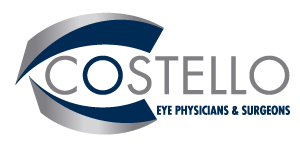Upper and Lower Blepharoplasty
With age, sun exposure or genetic factors, loose skin and excess fat may accumulate in your upper and lower eyelids. Blepharoplasty corrects sagging eyelids, excess folds and under-eye pouches. The surgery is performed under local anesthesia with sedation and takes one to two hours. You can resume light activity within three days, and exercise and more vigorous activities in one week.
Ptosis
Ptosis is the medical term for drooping of the upper eyelid, a condition that may affect one of both eyes. When the edge of the upper eyelid falls, it may block the upper field of your vision. Symptoms of ptosis include a decreased ability to keep your eyes open, eye strain and eyebrow fatigue from the increased effort needed to raise your eyelids, and fatigue – especially when reading. Acquired ptosis is treated surgically, with the specific operation based on the severity of the ptosis and the strength of the levator muscle. Surgery is designed to reattach the stretched muscle to its normal location.
Ectropion
Ectropion is the medical term used to describe an abnormal lower eyelid that turns outward and no longer touches the eye. As a result, the conjunctiva (the mucous membrane that lines the eyelid) may become red and exposed. This condition usually involves one or both lower eyelids but rarely, may affect the upper eyelid(s). If the ectropion is due to laxity of the eyelid’s supporting structures, it is best treated surgically. Depending on the cause, surgery can reposition the eyelid back to its normal position against the eye.
Entropion
Entropion is a condition in which an eyelid turns inward, rubbing against the eye, making it red, irritated and sensitive to light and wind. If it is not treated, the condition can lead to excessive tearing, crusting of the eyelid, mucous discharge, and irritation of the eye. A serious inflammation could result in damage to the eye. There are a number of surgical techniques for successfully treating entropion and each surgeon will have a preferred method. The usual treatment for entropion involves tightening of the eyelid and its attachments to restore the lid to its normal position.
Tear Duct
The tear drain consists of two small openings called punctum; one in your upper eyelid and the other in your lower eyelid. Each of these openings leads into a small tube called the canaliculus which, in turn, empties into the lacrimal sac between the inside corner of your eye and your nose. The lacrimal sac leads into a canal called the nasolacrimal duct that passes through the bony structures surrounding your nose and empties tears into your nasal cavity. The most common symptoms are excessive watering, mucous discharge, eye irritation, and painful swelling in the inner corner of your eyelids. Your surgeon may recommend a number of treatments based on the analysis of your symptoms.
Periocular Skin Cancers
The outer layer of skin is called the epidermis. Epidermal cells include flat squamous cells, round basal cells, and pigment producing melanocytes. The dermis is the deeper layer of skin and contains the hair follicles, oil and sweat glands, and blood vessels. Skin cancers can arise from any of these skin cells. A biopsy is usually required to confirm the diagnosis of skin cancer.
Additional Services Offered
- Tarsorrhaphy (Permanent + Temporary)
- Chalazion (Stye) Incision + Drainage
- Conjunctivoplasty
- Enucleation/Evisceration (Removal of Eye for Blind Painful Eye or Cancer)
- Pterygium Removal (Removal of Scar Tissue on the Eye Surface)






